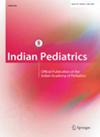小儿柔性支气管镜手术并发症的风险因素:印度北部一家三级医疗中心的经验。
IF 1.7
4区 医学
Q2 PEDIATRICS
引用次数: 0
摘要
我们分析了 869 名儿童的柔性支气管镜检查记录。我们发现 6.7% 的患儿(59 人)出现了手术并发症,其中 3.2% 的患儿(28 人)出现了严重并发症。年龄小于 1 岁、复发性呼吸道乳头状瘤病和支气管镜检查发现下气道畸形被确定为发生并发症的独立风险因素,调整后的几率比(95% CI)分别为 [2.6 (1.3, 4.9); P = 0.004]、[5.4 (1.7, 17.6); P = 0.005] 和 [2.1 (1.1, 4.0); P = 0.031]。本文章由计算机程序翻译,如有差异,请以英文原文为准。
Risk Factors for Procedural Complications of Pediatric Flexible Bronchoscopy: Experience From a Tertiary Care Centre in Northern India.
We analyzed the records of 869 children who underwent flexible bronchoscopy. We found procedural complications in 6.7% (n = 59), with severe events in 3.2% (n = 28). Age < 1 y, recurrent respiratory papillomatosis, and finding lower airway malacia on bronchoscopy were identified as independent risk factors for developing complications with adjusted odds ratio (95% CI) of 2.6 (1.3, 4.9); P = 0.004; 5.4 (1.7, 17.6); P = 0.005 and 2.1 (1.1, 4.0); P = 0.031, respectively.
求助全文
通过发布文献求助,成功后即可免费获取论文全文。
去求助
来源期刊

Indian pediatrics
医学-小儿科
CiteScore
3.30
自引率
8.70%
发文量
344
审稿时长
3-8 weeks
期刊介绍:
The general objective of Indian Pediatrics is "To promote the science and practice of Pediatrics." An important guiding principle has been the simultaneous need to inform, educate and entertain the target audience. The specific key objectives are:
-To publish original, relevant, well researched peer reviewed articles on issues related to child health.
-To provide continuing education to support informed clinical decisions and research.
-To foster responsible and balanced debate on controversial issues that affect child health, including non-clinical areas such as medical education, ethics, law, environment and economics.
-To achieve the highest level of ethical medical journalism and to produce a publication that is timely, credible and enjoyable to read.
 求助内容:
求助内容: 应助结果提醒方式:
应助结果提醒方式:


